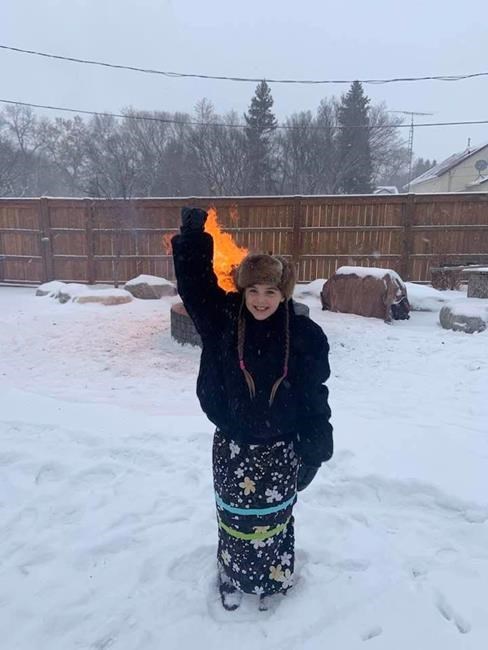REGINA — Chris Kulak says his 10-year-old daughter, Isabella, thinks it might be time for a new downstairs closet to hold all the ribbon skirts arriving from around the world.
The brightly patterned handmade skirts adorned with bands of ribbon are worn by Indigenous women during ceremonies and as an expression of cultural pride — something the Grade 5 student has touched off in others after a bad experience at her school.
Isabella, a member of the Cote First Nation in Saskatchewan, wore her ribbon skirt to school last month when it held a formal day before Christmas break.
“We encouraged her to wear it. Probably changed her shirt three or four times. You could tell she was nervous about does it match? Does it look good?" Kulak said in a phone interview about his daughter.
“We thought she looked wonderful."
Isabella attends school in Kamsack, a town about 270 kilometres east of Regina. The day she wore her traditional skirt, she left the house smiling, said Kulak.
But when she came home, she had taken it off and she acted withdrawn.Â
The family learned a staff member had told Isabella her outfit didn't match and the skirt wasn't considered formal. The staffer compared what Isabella had on to another student wearing a store-bought dress, he said.Â
The Good Spirit School Division has apologized for what Isabella's father said he believes was a racially motivated comment.
"This was a tremendous error," said Quintin Robertson, the division's education director, who added that the individual who made the comment accepts responsibility.Â
"We needed to acknowledge the systemic racism that still does exist and the cultural ignorance that still does exist in our school division and in our province."
Robertson said the division is discussing the matter with the Cote First Nation, which is part of a group suggesting that a Ribbon Skirt Day be held nationally every Jan. 4.
That was Isabella's first day back to school and members of her family wearing ribbon skirts walked to her there, said Kulak. He and others spoke, and his daughter was drummed into the building, with supporters there from other First Nations, plus division staff.
"It began the movement and that date should be honoured," he said.
“That’s when everybody finally woke up and realized that they had to stand up and make some noise.”
Hundreds of photos of women proudly wearing their ribbon skirts with messages of encouragement for Isabella have appeared on social media and a Facebook page set up to show support for her.Â
"Stand tall little one ... your aunties have your back!" Manitoba NDP member of the legislature Nahanni Fontaine tweeted along with a photo of her and other women in their ribbon skirts.
On Friday, Prime Minister Justin Trudeau called Isabella courageous for wearing her skirt to school to celebrate her culture, and said Canadians need to stand together.
Robertson said the division will hold a Ribbon Skirt Day honouring Indigenous culture, including ribbon shirts, which are worn by men, on whatever day is decided with the First Nation.
The Federation of Sovereign Indigenous Nations, which represents Saskatchewan's 74 First Nations, has also called for schools to participate in a Ribbon Skirt Day.
"I stand with young Isabella and the Kulak family in encouraging support for a national Ribbon Skirt Day, and all efforts to increase and improve respect and understanding of First Nations cultures," Assembly of First Nations Chief Perry Bellegarde, who spoke with the girl Thursday, said in a statement.
"A day marking her important story, and focusing on the importance of continuing to learn and share from one another, is something every Canadian should get behind."
Kulak said his family never asked for any attention, but believes part of the reason his daughter's story started a movement was that for too long Indigenous peoples have had to hide their cultural pride.Â
“When this happened to my little girl, the ladies of the Prairies and all across the nation — and the men as well — decided that was enough.
“The court of public opinion spoke pretty loudly and it’s pretty obvious what they thought."
This report by The Canadian Press was first published Jan. 8, 2021.
Stephanie Taylor, The Canadian Press



